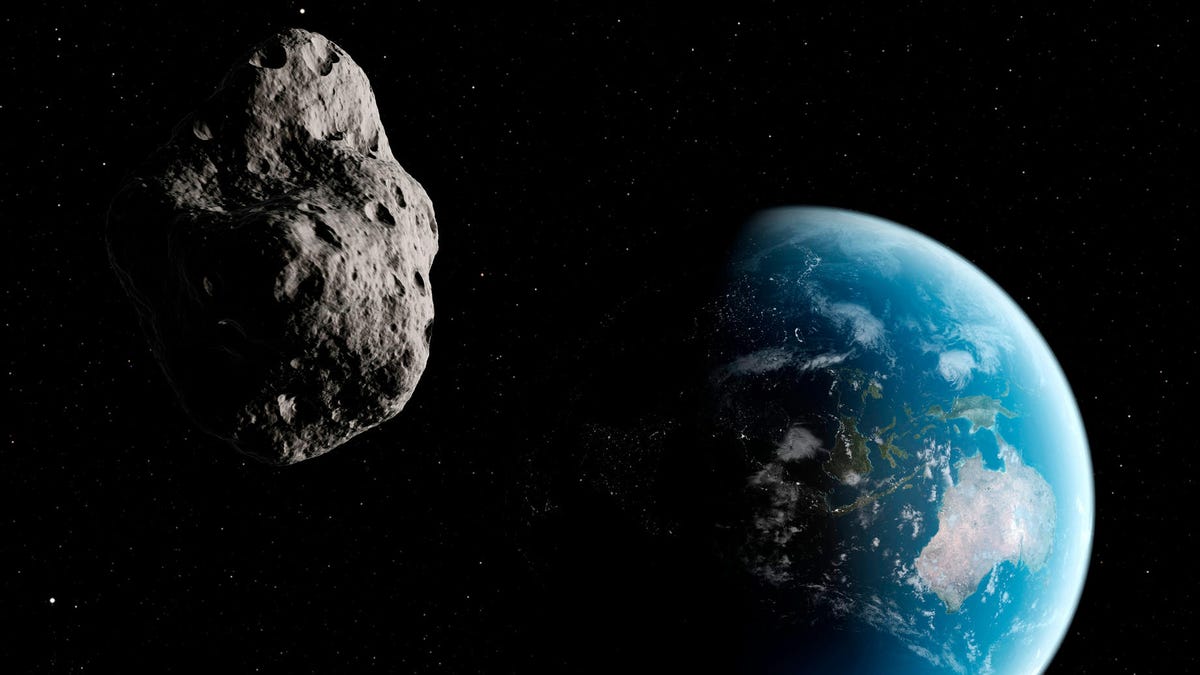A large asteroid ignored social distancing norms over the weekend
An asteroid as wide as a football field passed through the neighborhood.

One large object did not shelter in place over the weekend.
Public health officials advise keeping 6 feet (2 meters) of distance from others during the coronavirus pandemic to avoid potential risks. Astronomers also have a standard distance at which an asteroid is considered "potentially hazardous," and on Sunday a space rock as wide as a football field whipped by us 50 times closer than that threshold.
We obviously have enough to worry about right now, so you can breathe easier knowing that despite coming very close by space standards, there was never any threat the asteroid known simply as 2020 FL2 was going to hit Earth. It passed by Sunday at a distance of 90,000 miles (145,000 kilometers).
Apollo-type asteroid 2020 FL2. Diamter 15-34m. First observed at Purple Mountain Observatory. Close approach, yesterday, 145,000km. 2020 FL2 was moving at a rapid 1,800 arc-minutes per hour. #SpotTheAsteroid@AsteroidDay @NEOShieldTeam @QHYCCD @RoyalAstroSoc pic.twitter.com/ms9INbJDKS
— Northolt Branch Obs (@NBObservatories) March 23, 2020
For a little context, NASA's Solar and Heliospheric Observatory (SOHO) is located about 932,000 miles (1.5 million kilometers) from Earth, the moon is 239,000 miles (384,000 kilometers) away and many large satellites orbit at an altitude of 22,236 miles (35,786 kilometers). The threshold at which a large asteroid comes close enough to earn the label "potentially hazardous" and warrant monitoring by astronomers is about 4.5 million miles (7.2 million kilometers).
So 2020 FL2's close flyby is kind of like the solar system equivalent of tying a bunch of boats together for a spring break party during a time when everyone with a brain is calling for social distancing to stop the spread of a pandemic. The difference, I suppose, is that the huge asteroid flying above us at 45,000 mph (72,420 km/h) doesn't actually pose a threat to anyone.
Miami party boat and yacht charters still operating. Plenty of jam packed yachts on Biscayne Bay yesterday. Social distancing be damned indeed.
— John Huddy (@JohnHuddyTV) March 22, 2020
Social distancing be damned: Miami sandbar jampacked despite coronavirus orders https://t.co/h05Yx6C82E
2020 FL2 was significantly bigger than most asteroids that pass within the moon's orbit, measuring at between 49 and 112 feet (15-34 meters) across. Normally the space rocks that come close are more like the size of a house appliance or a small vehicle and would likely burn up in our atmosphere if they did impact Earth.
This asteroid, however, is more on par with the asteroid that wasn't detected until it was exploding in the sky over Russia in 2013, blowing out thousands of windows in the process.
But again, asteroid 2020 FL2 has already passed by us safely. So please go back to whatever you were doing, as long as you don't do it within 6 feet of me or anyone I know.

